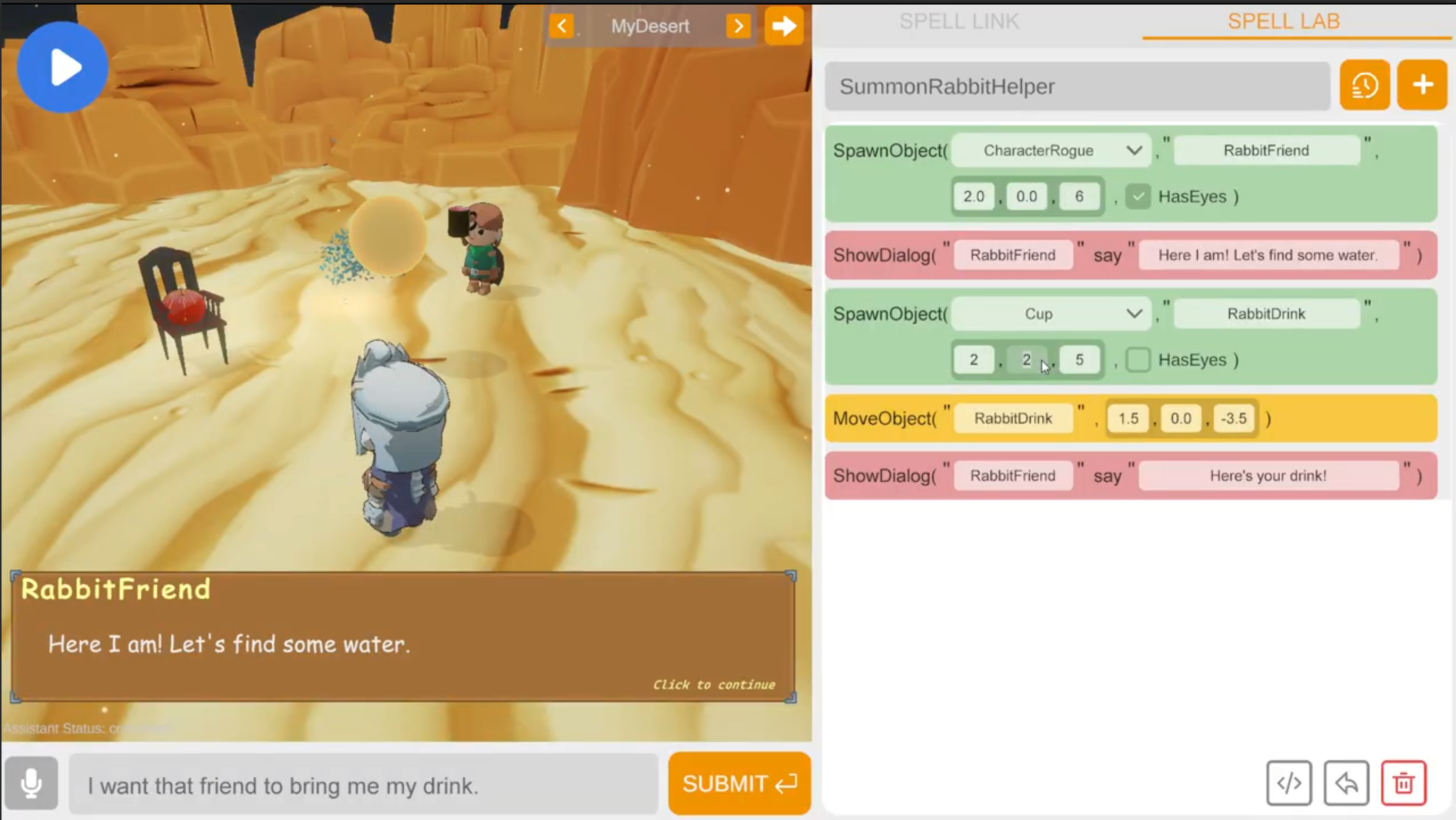This week, our focus was on preparing for Soft Opening, a milestone where faculty members visit our team, try out the project, and offer detailed feedback. It’s not only a checkpoint—it’s a valuable opportunity to reflect on our progress and sharpen our direction for the final stretch.
Refining Interactions and Stability
We spent the week improving the tool’s stability and usability through a round of targeted playtests with classmates. These sessions helped us evaluate whether users could intuitively interact with the tool and whether the AI model handled a variety of inputs smoothly. The results were promising, giving us more confidence in our current build.
Encouraging Storytelling with Visual Cues
In a small experiment, we added eyes to several in-game objects to explore whether subtle personality cues could support narrative thinking. Early playtests suggest that players were more likely to treat these objects as characters, reinforcing our direction toward interactive storytelling.
Reframing the Tool’s Purpose
Heading into Softs, we clarified the educational intent behind our tool. It’s designed for a classroom or workshop setting, guided by a teacher—not as a standalone game for children to use independently. Our tool remains a playtestable exploration meant to support computer science learning.
Supporting Learning Through Decomposition
A key learning objective for our tool is helping students understand decomposition—breaking a large idea into smaller, manageable parts. The tool encourages students to bring in high-level story ideas and use AI to translate them into code blocks. Players still need to critically engage with the logic, refine prompts, and manually link code to objects, supporting early programming problem-solving skills.
Story Structure with CROW
To guide our narrative design, we used the CROW framework: Character, Relationship, Objective, and Where. Each player’s story begins with a character, takes place in one of three scenes (Forest, Castle, or Desert), and unfolds through object interactions and code-based conditions. This structure helps scaffold creativity while keeping the experience accessible.
Feedback from Softs and Looking Ahead
Softs provided valuable feedback. Faculty appreciated the clarity of our deliverables and offered suggestions to improve usability and define more clearly what the tool can and cannot do. These insights will guide our priorities during the final development push.
Next Steps
Week 12 marked a shift from making things functional to making them meaningful. With a stable build, narrative clarity, and feedback from Softs, we’re heading into the final weeks with a clear focus and momentum.
